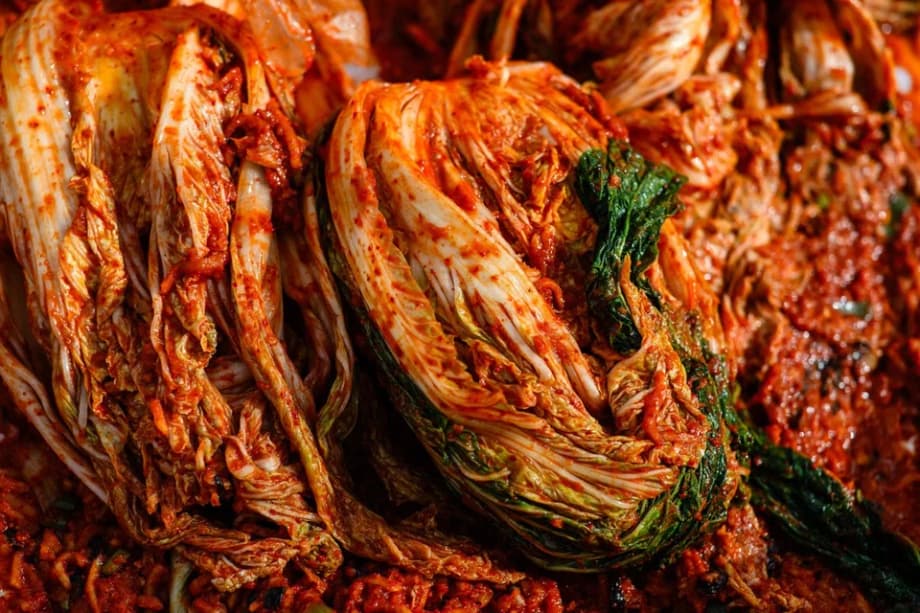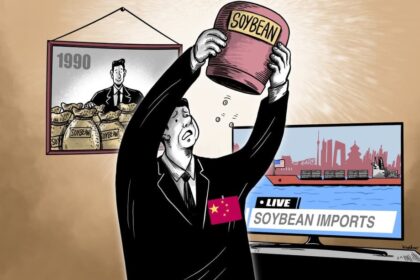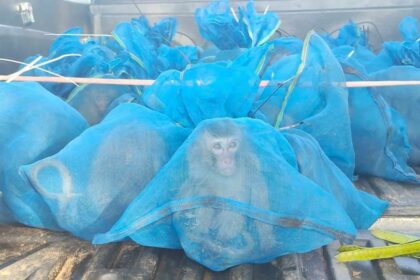Why a national dish is driving a trade gap
Global appetite for Korean kimchi is still rising. South Korea expects overseas sales to set a new all time high in 2025. At the same time, more kimchi eaten inside the country is imported from China. This push and pull has left the nation with a widening kimchi trade deficit.
Official customs data through October 2025 shows exports of US$137.4 million, up 2 percent on year, while imports reached US$159.46 million, up 3.1 percent. That gap leaves a deficit of US$22.07 million so far this year, larger than the same period last year. The imbalance follows a record import year in 2024 when the value of shipments from abroad jumped and volumes crossed 300,000 tons.
Price is the main driver. Inflation and a spike in domestic cabbage costs after extreme weather in 2024 made Chinese products far cheaper for restaurants and caterers. Nearly every imported shipment originates in China, and most of it flows into the food service sector rather than household kitchens.
The numbers behind the deficit
The deficit has persisted for three straight years after a brief surplus in 2021, when imports dipped during a widely publicized sanitation controversy in China. By 2024, imports had climbed to a record US$189.86 million. Exports also set a record at US$163.57 million but could not keep pace, leaving a US$22.69 million shortfall for the year, almost triple the 2023 gap of US$7.98 million.
What customs data shows in 2025
In the first quarter of 2025, import value reached US$47.56 million, up 16.7 percent on year. Import volumes rose 10.1 percent to 80,970 tons. From January through May, volumes totaled 137,783 tons, while value rose to US$79.88 million. A strong dollar pushed up the value measured in won, which is why import value grew faster than tonnage. Through October, imports of US$159.46 million still exceeded exports of US$137.4 million, leaving a deficit of US$22.07 million.
Price gap that reshaped consumption
The economics are straightforward. In 2022, Korea imported Chinese kimchi at an average price of about US$643 per ton. That was less than one fifth of the average price fetched by Korean kimchi exports at about US$3,425 per ton. With raw ingredient costs rising at home, the savings for buyers were hard to ignore. Statistics Korea reported double digit gains in kimchi prices for months, while the price of napa cabbage rose by more than 15 percent in April. Retail data showed an average price above 5,400 won for a single head of cabbage in parts of the year.
Restaurants drive demand for imports
Food service operators are the main consumers of imported kimchi. A study by the World Institute of Kimchi reported in 2016 that nearly 90 percent of the kimchi purchased by South Korean restaurants was sourced from China. The tendency has strengthened during periods of tight supply and higher input costs, when diners are less likely to check the origin of side dishes.
Price comparisons available to restaurant owners underline the gap. Ten kilograms of Chinese kimchi could be found for about 13,800 won at a wholesale oriented mart this year, while a similar quantity of domestic kimchi was quoted at about 40,500 won. Another retailer listed 14,200 won for Chinese products against 35,800 won for Korean brands. Switching to imports can trim kimchi costs by roughly 60 to 65 percent for a small eatery.
Weather shocks and currency swings
Abnormal weather hit cabbage fields in successive seasons. An unusually warm fall was followed by a cold winter, heavy snow and late cold snaps. Highland summer crops faced heat waves. Production shortfalls pushed up the price of napa cabbage and radish, the foundation of many kimchi styles. Even with some stabilization in recent months, the price spikes worked their way through the kimchi supply chain.
Currency moves added to the squeeze. When the dollar strengthened against the won, the value of imports rose more quickly than tonnage. That dynamic appeared in early 2025, when import value growth outpaced volume growth. Officials have signaled steps to stabilize supply, from supporting small kimchi producers to store cabbage when prices are low to closer management of summer cabbage supply.
China’s near monopoly on imported kimchi
China supplies virtually all of South Korea’s imported kimchi. In 2024, South Korea imported about 310,000 tons, and 99.98 percent of those shipments originated in China. Most of these shipments end up in restaurants and catering businesses where affordability is crucial.
Inside the supply chain from Shandong to Seoul
Large scale production hubs in eastern China, including towns in Shandong Province, have become tightly linked to Korean buyers. Industry accounts describe one town, Renzhao, as the source of a large share of South Korea’s imported kimchi. Producers there upgraded processing, matched Korean tastes and built cold chain logistics to keep products crisp. A green channel for customs clearance helps speed deliveries to Korean ports.
Trade policy has also helped. The China Korea free trade agreement, in force since late 2015, eased flows of processed foods. When domestic cabbage harvests faltered in past years, tariff adjustments and large orders from Chinese suppliers kept restaurant tables stocked.
Exports thrive as K-food spreads
Even as imports rise, exports continue to grow on the back of global interest in Korean cuisine. Overseas sales reached a record US$163.57 million in 2024. In the first ten months of 2025, exports climbed to US$137.4 million, up 2 percent on year, putting a new annual record within reach.
Where the appetite is strongest
Japan remains the largest destination, with purchases of about US$47.55 million through October, a 4.4 percent increase. Sales to the United States eased 5.8 percent to US$36.01 million after several years of rapid growth. Shipments to the Netherlands declined 3.3 percent to US$7.97 million. Canada rose 17.6 percent to US$7.63 million, and Australia posted a modest increase to US$6.68 million.
South Korea’s agriculture leadership frames kimchi as both a cultural symbol and a strategic export. Agriculture Minister Song Mi ryung outlined the government’s intent to support the sector.
“We will work to develop the kimchi industry into a future oriented export sector and help solidify kimchi’s place as a global food brand.”
Cultural sensitivities and trade barriers
Kimchi carries meaning beyond the dinner table. The seasonal tradition of making it, known as Kimjang, is listed by UNESCO as intangible cultural heritage. The dish is a marker of identity for many Koreans, which is why shifts in sourcing can trigger passionate debate.
In 2020, new ISO rules for Chinese pao cai caused confusion after some media reports suggested they applied to kimchi. South Korean authorities clarified that the ISO document did not cover kimchi and pointed to international food standards for kimchi adopted in 2001. Ties between the industries are complicated by regulation. Korean kimchi exports to China remain minimal because of strict Chinese rules on pickled goods.
Policy choices and what comes next
The immediate challenge is to balance price relief at home with support for farmers and producers. Measures under discussion include larger reserves of cabbage and radish, financing to expand cold storage and programs to stabilize supply in summer and winter. Tighter origin labeling and broader adoption of HACCP quality systems can help maintain consumer trust regardless of where kimchi is made.
Producers are adapting by focusing premium lines on export markets and value products for domestic food service. If cabbage supply recovers and inflation cools, the price gap may narrow. For now, China’s near total share of imports, combined with strong export momentum, defines the market.
Key Points
- Through October 2025, exports reached US$137.4 million, up 2 percent on year.
- Imports in the same period totaled US$159.46 million, up 3.1 percent, leaving a year to date deficit of US$22.07 million.
- In 2024, import value hit a record US$189.86 million and volume topped 300,000 tons, while exports set a record at US$163.57 million.
- China accounted for 99.98 percent of South Korea’s imported kimchi in 2024, with most used in restaurants and catering.
- In 2022, imported Chinese kimchi averaged about US$643 per ton, far below the US$3,425 per ton average price for Korean kimchi exports.
- Kimchi prices posted double digit gains in recent months, while napa cabbage prices rose more than 15 percent on year in April.
- In early 2025, import value growth outpaced volume due to a strong dollar, highlighting currency effects.
- Japan is the largest export market in 2025, while sales to the United States eased compared with last year.
- The government plans supply stabilization measures and support for small producers, while exporters target premium segments.











